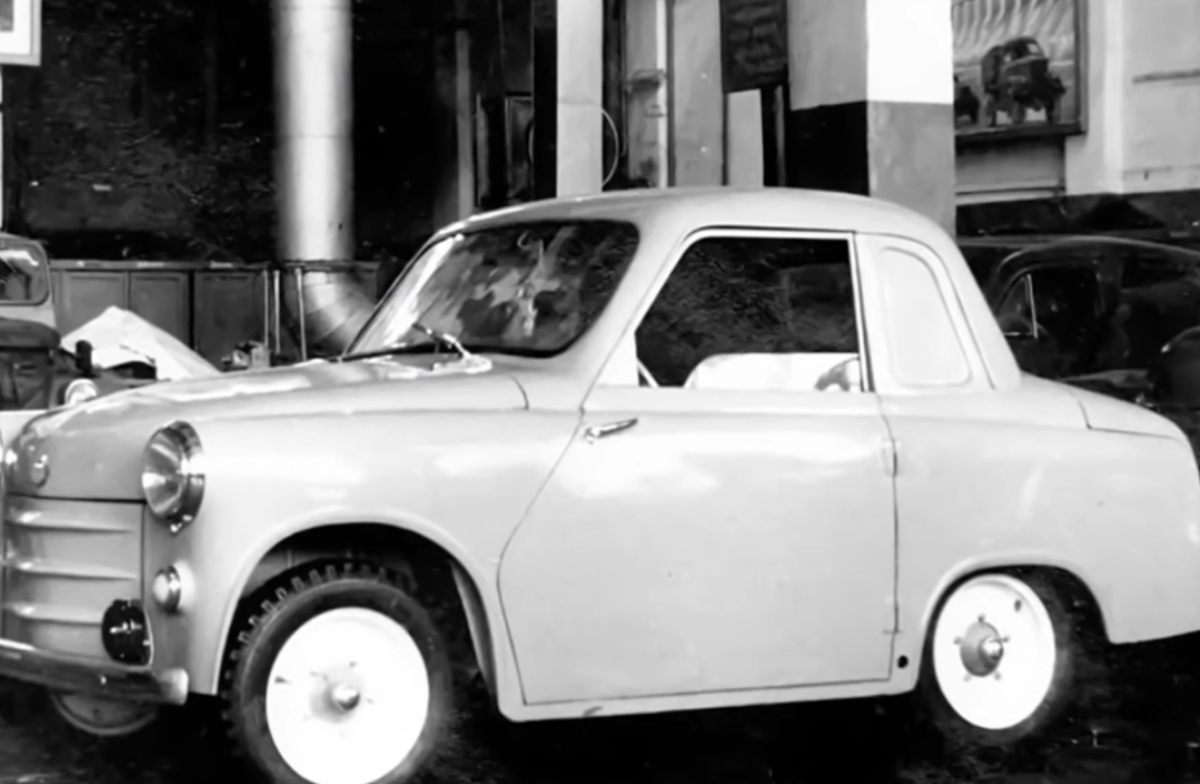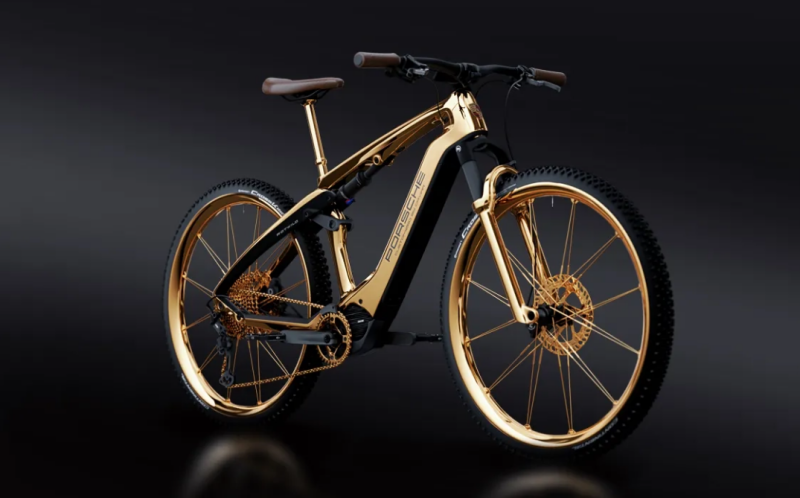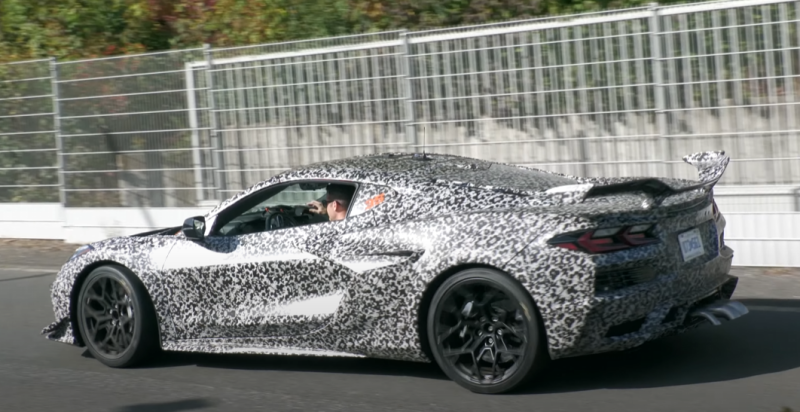In the second half of the 1950s, the Gorky Automobile Plant almost began to produce class A compact cars. Engineers designed the GAZ-18, a minicar that looked no worse than such famous Fiat models as the 500 or Topolino.
As a result, the GAZ plant did not become a manufacturer of small cars, although the prototypes were structurally superior to the best European A-class models.
Where did the idea come from?
In the Soviet Union, the development of the automotive industry followed its own algorithm, there were not enough cars.
 Motorized carriage S-1L. Photo: Youtube.com
Motorized carriage S-1L. Photo: Youtube.comThe invalids of the Great Patriotic War suffered the most. They relied on free hand-operated motorized carriages. This technique was inconvenient, low-power and did not differ in high cross-country ability. These are S-1L motorized carriages with a simple design, a canvas roof and a 3,5 liter engine. With.
In 1955, the Central Committee of the CPSU received a collective letter from Kharkov invalids, in which they asked to resolve the issue of mechanized transport. "Top" issued a resolution that a new car is needed for the participants in the Great Patriotic War. Oddly enough, but instructed to develop a "disabled" Gorky plant.
Model development
The designers had little understanding of how to make a small car - they did not have such experience. But Nikolai Alexandrovich Yushmanov, who created the GAZ-12 ZIM, and then the famous Chaika (in 1959), was interested in just such projects.
Such a small car in the USSR simply did not exist, plus everything in Europe, the A-class was at the peak of its fame. Yushmanov was well aware that the car could become popular not only among the disabled, so he worked for the future.
Although, even the creator of the future GAZ-18 understood that the car would not be produced at the Gorky Plant. There, the areas were occupied by more popular models. But Yushmanov approached the development with all responsibility, deciding to make it complete and as comfortable as possible for the disabled.
 It turned out to be a full-fledged two-seater car. Photo: Youtube.com
It turned out to be a full-fledged two-seater car. Photo: Youtube.comIn order to understand in which direction to move, the designer consulted with the same Kharkovites who sent a letter to the Central Committee of the CPSU. Many nuances were suggested to Yushmanov by Boris Borisovich Kotelnikov, the head of the GAZ experimental workshop. He was also disabled - he froze his legs during the tests.
Technical features
GAZ-18, even at the development stage, became a full-fledged car with a closed body type. According to the terms of reference, the engine power should have been at least 10 hp. With. The designers did not experiment with motorcycle power units, rejecting even a four-stroke engine from the IMZ M-72.
For the GAZ-18, it was decided to take a four-cylinder engine from Moskvich and modify it for a small car. As a result, the engine was "halved", making it a two-cylinder. The power of the new power unit was 18 liters. With. with a working volume of 620 cm3.
Interestingly, to simplify the design, the engine was installed at the rear. Most European small car manufacturers did the same at the time.
To avoid problems with cooling, it was made liquid.
The most important difference between the Soviet GAZ-18 and foreign analogues was the presence of a full-fledged automatic transmission. The automatic transmission for the small car was developed on the basis of the same unit for the GAZ-21 Volga - it was in those years that it was being prepared for conveyor production.
 The motor was located at the rear of the car. Photo: Youtube.com
The motor was located at the rear of the car. Photo: Youtube.comNow it’s hard to say whether the automatic transmission would have taken root on serial samples of the GAZ-18, because it was abandoned on the Volga. In any case, for the disabled, such a box was a boon. But tests on the GAZ-21 showed that the unit with a torque converter is not very reliable. And special oils for automatic transmissions were not produced in the Soviet Union.
When creating car suspensions, the designers focused on European-made small cars, especially the Volkswagen Beetle. It was decided not to experiment and copy the solutions of the German colleagues. As a result, the car received independent torsion bar suspension front and rear.
Although outwardly the GAZ-18 seems like a small subcompact, it is spacious inside. No wonder - the car was designed for only two. The level of comfort in the cabin of the Soviet subcompact was not inferior to the Volga - this was also done deliberately, as a sign of respect for the veterans of the Great Patriotic War.
Nothing worse than foreign
In 1956, the first prototype GAZ-18 was ready. This car was at the Moscow Automobile Exhibition, in which foreign manufacturers also participated. The small car GAZ-18 was placed next to foreign motorized carriages, and it favorably differed from their background for the better.
 One of the copies of the GAZ-18 has survived to this day. Photo: Youtube.com
One of the copies of the GAZ-18 has survived to this day. Photo: Youtube.comDevelopment continued, and by 1958 two prototypes of the Soviet small car were ready. After a series of tests, they were recognized as fit for mass production.
Why didn't they launch?
After preparing the first (and last) pair of GAZ-18 copies, the issue of producing new cars became acute for the designers. There was no place for them at the Gorky Plant.
The first contender was an enterprise in Serpukhov, where the simplest motorized carriages had previously been produced. Just in 1958, a new "invalid" S-ZA appeared there. She began to look more like a traditional car - she received 4 wheels instead of three and a front torsion bar suspension.
After carefully examining the Serpukhov model, the Gorky designers realized that this was all that the enterprise was capable of. They are simply not able to master the small car GAZ-18 - this is a full-fledged car.
But there was an opportunity to arrange the production of cars at some new plant, specially converted for these purposes.
 Serpukhov "disabled woman" S-ZA. Photo: Youtube.com
Serpukhov "disabled woman" S-ZA. Photo: Youtube.comBack in 1956, MZMA and NAMI began work on the Moskvich-444 project. It was this car that later became the ZAZ-965 - the very famous "Hunchback".
The Kommunar combine harvester plant in Zaporozhye was being prepared for the production of small-capacity models. The Gorky designers tried to negotiate the launch of the GAZ-18 there, but nothing came of it.
Moreover - "from above" the order came to curtail all work on the GAZ-18. This car turned out to be too comfortable and expensive to manufacture. As a result, the ZAZ-965 became the new "disabled person".
What happened to the two prototypes?
Having received a categorical refusal, the question arose of using two GAZ-18 prototypes. One of them was given to the head of the shop Kotelnikov, who was directly involved in the development. The man operated the car for many years, solving issues with spare parts on his own, fortunately, he had opportunities for this.
The second experimental GAZ-18 was nevertheless sent to Serpukhov. Yushmanov, the chief designer of the project, hoped that the production of this car would someday be established there.
 Instead of GAZ-18, they began to produce ZAZ-965. Photo: Youtube.com
Instead of GAZ-18, they began to produce ZAZ-965. Photo: Youtube.comBut these plans were not destined to come true - the car was gathering dust in warehouses for a long time, and then, by some unknown means, fell into private hands.
There it was operated for years, along the way, modifying those units and parts that were available.
But the model was preserved - in the late 1990s it was bought out and returned to the Gorky Automobile Plant. The car was restored as best they could, repainted and sent to their museum. The model is still stored there, although it has only the original body.
GAZ-18 could become the first representative of domestic minicars. The car was comfortable and technically perfect. This is what played against the car - its place was taken by a simple and even primitive ZAZ-965.










